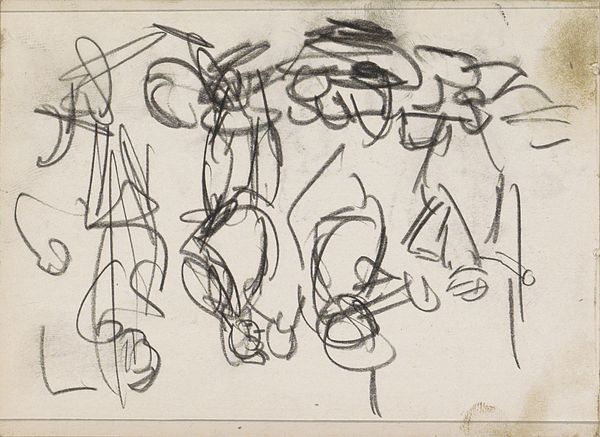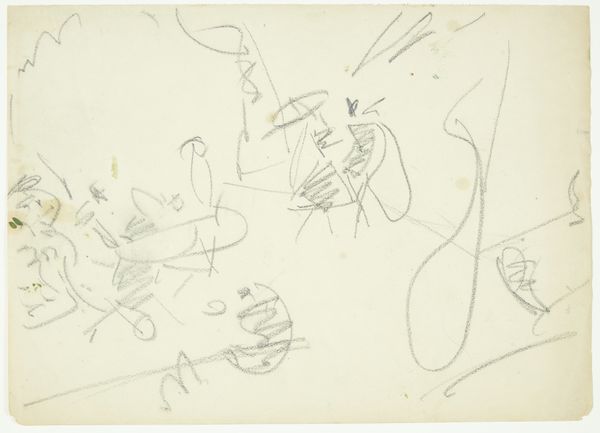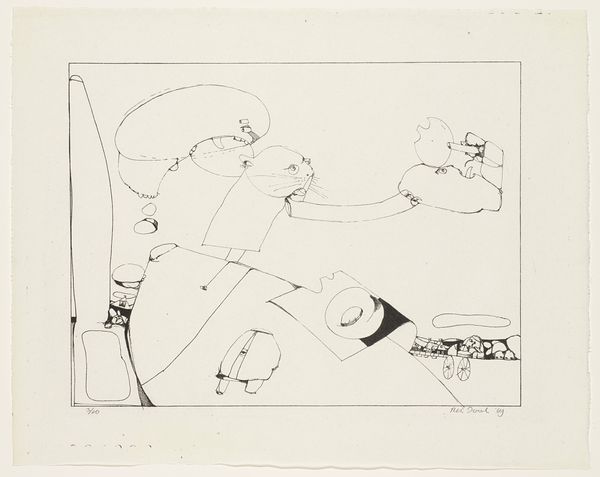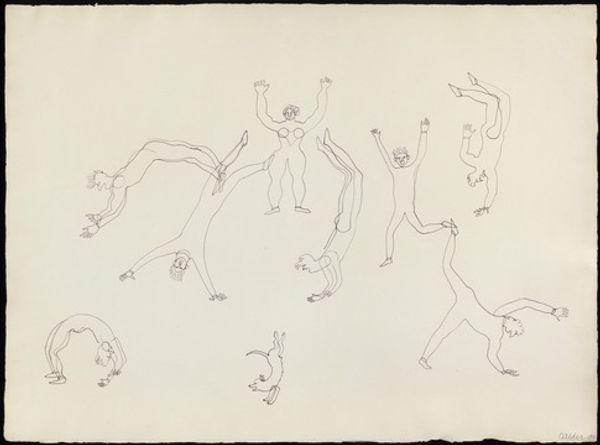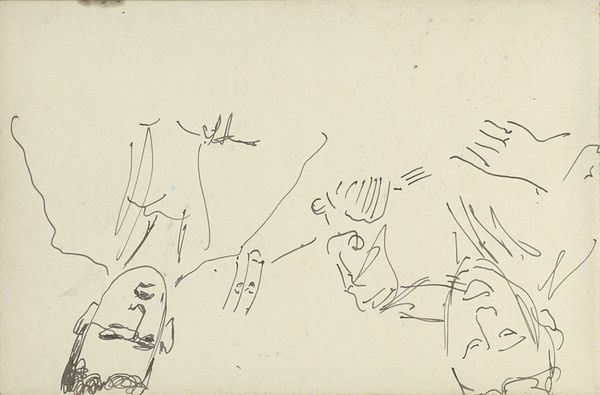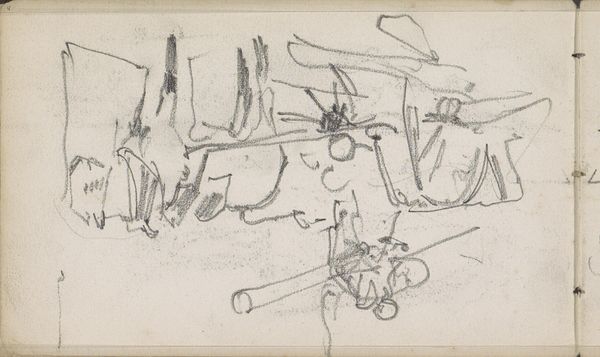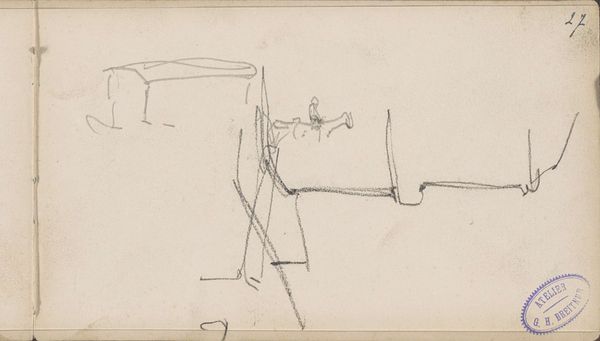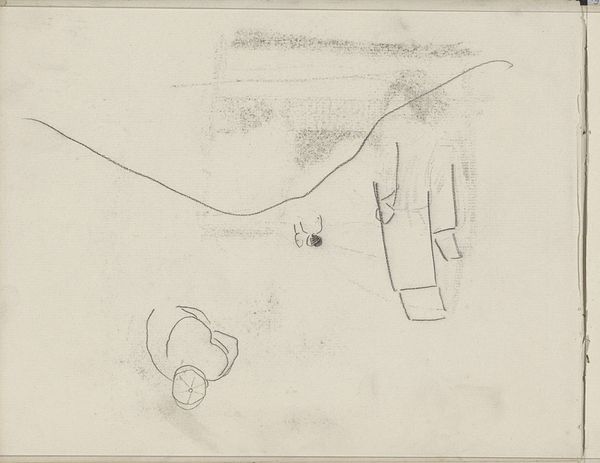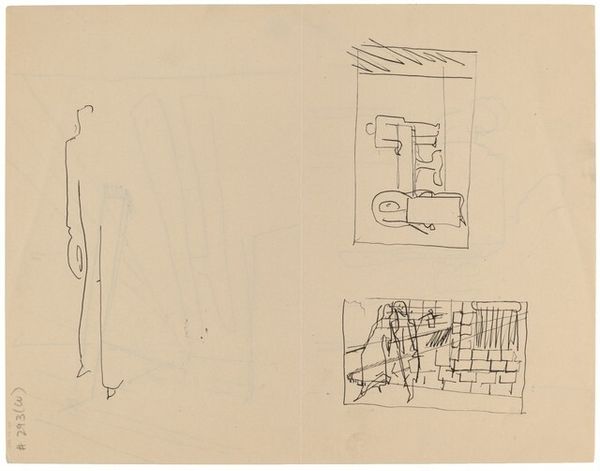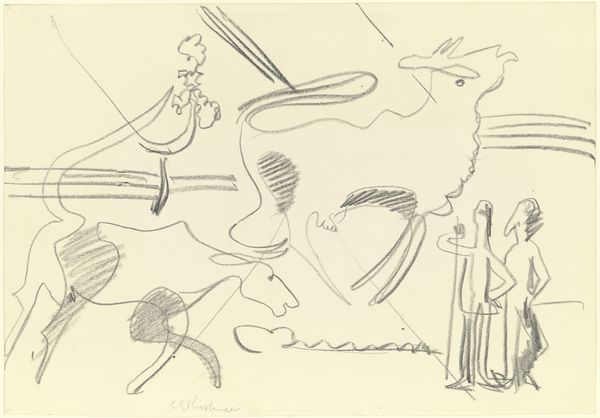
drawing, ink, pen
#
drawing
#
ink drawing
#
pen sketch
#
figuration
#
form
#
ink
#
pen-ink sketch
#
line
#
pen
Dimensions: sheet: 29.6 × 46.8 cm (11 5/8 × 18 7/16 in.)
Copyright: National Gallery of Art: CC0 1.0
Curator: This piece by Charles Sprague Pearce, created between 1890 and 1897, is titled "Sketches for a Scroll." It's an ink drawing, showcasing multiple scroll forms. What are your initial thoughts? Editor: It strikes me as so open-ended, almost begging for meaning to be inscribed upon it. The blankness is rather powerful. It also seems a commentary on historical modes of documentation versus contemporary rapid information dissemination. Curator: That’s an astute observation. Considering the historical context, this piece was made at a time of burgeoning literacy and shifts in information accessibility. How does this preliminary study interact with broader political concerns of communication? Editor: I wonder if these blank scrolls represent unrealized potential. The era witnessed growing demands for societal change, civil rights and expanded political discourse. The empty scrolls read as placeholders for documents not yet drafted and declarations of principles not yet established. What is power without the words to express it? Curator: Exactly, and think of the role that art institutions play. Pearce was working within the salon system and other powerful forces. To what extent do these sketches hint at the constraints on artistic expression within the institutions that showcased art at the time? Editor: It certainly poses questions about the boundaries of artistic freedom within established structures. Perhaps it serves as an intersection of visual form and implied content where the absence becomes a statement itself. The simple forms remind us that language itself is a technology shaped by historical forces. Curator: A very potent idea. Perhaps the scroll form also echoes back to antiquity to suggest timeless truths. This work shows Pearce experimenting, and it allows us to consider the layers of influence at work. Editor: The open-endedness, however, prompts a deeper engagement. What we fill the scroll with reveals not only Pearce's context but our own contemporary biases. Thanks to this work, history is always up for renegotiation. Curator: That is quite insightful, seeing as our readings themselves are acts of inscribing. Editor: Precisely, giving these blank historical forms new meaning in our ever-changing world.
Comments
No comments
Be the first to comment and join the conversation on the ultimate creative platform.
